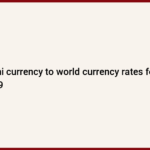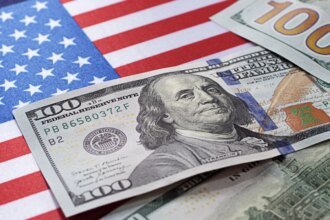- GBP/USD trades deep in negative territory below 1.3200 on Monday.
- The USD outperforms its rivals on US-China trade agreement.
- The pair could extend its slide in case it flips 1.3160 into resistance.
GBP/USD comes under strong bearish pressure to start the week and trades at its lowest level since mid-April below 1.3200. The positive sentiment surrounding the US Dollar (USD) suggests that the pair could have a difficult time staging a rebound in the near term.
British Pound PRICE Today
The table below shows the percentage change of British Pound (GBP) against listed major currencies today. British Pound was the weakest against the US Dollar.
| USD | EUR | GBP | JPY | CAD | AUD | NZD | CHF | |
|---|---|---|---|---|---|---|---|---|
| USD | 1.26% | 1.01% | 1.24% | 0.57% | 0.25% | 0.79% | 1.27% | |
| EUR | -1.26% | -0.12% | 0.53% | -0.20% | -0.38% | 0.00% | 0.49% | |
| GBP | -1.01% | 0.12% | 0.80% | -0.09% | -0.26% | 0.05% | 0.60% | |
| JPY | -1.24% | -0.53% | -0.80% | -0.68% | -1.60% | -1.30% | -0.21% | |
| CAD | -0.57% | 0.20% | 0.09% | 0.68% | -0.05% | 0.22% | 0.69% | |
| AUD | -0.25% | 0.38% | 0.26% | 1.60% | 0.05% | 0.29% | 0.83% | |
| NZD | -0.79% | -0.01% | -0.05% | 1.30% | -0.22% | -0.29% | 0.45% | |
| CHF | -1.27% | -0.49% | -0.60% | 0.21% | -0.69% | -0.83% | -0.45% |
The heat map shows percentage changes of major currencies against each other. The base currency is picked from the left column, while the quote currency is picked from the top row. For example, if you pick the British Pound from the left column and move along the horizontal line to the US Dollar, the percentage change displayed in the box will represent GBP (base)/USD (quote).
The USD continues to gather strength against its rivals after starting the week on a bullish note. The USD Index, which tracks the USD’s performance against a basket of six major currencies, was up more than 1% on the day above 101.50 at the time of writing.
Following the first round of official negotiations between representatives from China and the US over the weekend, US Treasury Secretary Scott Bessent said that they had “productive and constructive” discussions, while China’s Vice Premier He Lifeng described the talks as “in-depth” and “candid.”
In a press conference early Monday, Bessent announced that they have agreed to pause reciprocal tariffs for 90 days and added that both sides will lower them by 115%. This development fuelled a USD rally and triggered a sharp decline in GBP/USD.
The economic calendar will not offer any high-impact data releases that could influence the market mood. On Tuesday, April employment data from the UK and April Consumer Price Index (CPI) figures from the US will be watched closely by market participants.
GBP/USD Technical Analysis

GBP/USD was last seen trading near 1.3160, where the 200-period Simple Moving Average (SMA) meets the Fibonacci 38.2% retracement level of the latest uptrend. In case the pair drops below this level and starts using it as resistance, technical sellers could remain interested. In this scenario, 1.3100 (50-day SMA) could be seen as next support ahead of 1.3070 (Fibonacci 50% retracement) and 1.3000-1.2990 (round level, Fibonacci 61.8% retracement).
Meanwhile, the Relative Strength Index (RSI) indicator on the 4-hour chart stays slightly above 30, suggesting that the pair has more room on the downside before turning technically oversold.
Looking north, first resistance could be seen at 1.3200 (static level, round level) before 1.3270 (Fibonacci 23.6% retracement) and 1.3300 (20-day SMA).
Pound Sterling FAQs
The Pound Sterling (GBP) is the oldest currency in the world (886 AD) and the official currency of the United Kingdom. It is the fourth most traded unit for foreign exchange (FX) in the world, accounting for 12% of all transactions, averaging $630 billion a day, according to 2022 data.
Its key trading pairs are GBP/USD, also known as ‘Cable’, which accounts for 11% of FX, GBP/JPY, or the ‘Dragon’ as it is known by traders (3%), and EUR/GBP (2%). The Pound Sterling is issued by the Bank of England (BoE).
The single most important factor influencing the value of the Pound Sterling is monetary policy decided by the Bank of England. The BoE bases its decisions on whether it has achieved its primary goal of “price stability” – a steady inflation rate of around 2%. Its primary tool for achieving this is the adjustment of interest rates.
When inflation is too high, the BoE will try to rein it in by raising interest rates, making it more expensive for people and businesses to access credit. This is generally positive for GBP, as higher interest rates make the UK a more attractive place for global investors to park their money.
When inflation falls too low it is a sign economic growth is slowing. In this scenario, the BoE will consider lowering interest rates to cheapen credit so businesses will borrow more to invest in growth-generating projects.
Data releases gauge the health of the economy and can impact the value of the Pound Sterling. Indicators such as GDP, Manufacturing and Services PMIs, and employment can all influence the direction of the GBP.
A strong economy is good for Sterling. Not only does it attract more foreign investment but it may encourage the BoE to put up interest rates, which will directly strengthen GBP. Otherwise, if economic data is weak, the Pound Sterling is likely to fall.
Another significant data release for the Pound Sterling is the Trade Balance. This indicator measures the difference between what a country earns from its exports and what it spends on imports over a given period.
If a country produces highly sought-after exports, its currency will benefit purely from the extra demand created from foreign buyers seeking to purchase these goods. Therefore, a positive net Trade Balance strengthens a currency and vice versa for a negative balance.
(This story was corrected on May 12 at 09:17 GMT to say that the Relative Strength Index stays slightly above 30, not below.)





















